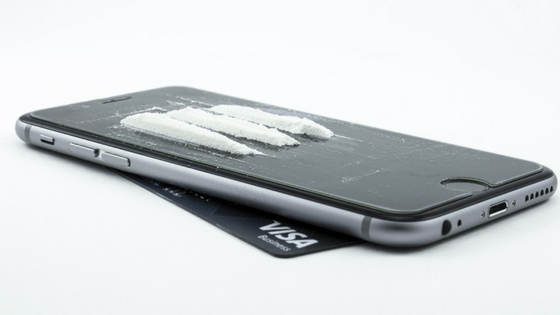In the simplest words, cocaine is a party drug. The highly addictive stimulant is used as a fine white powder that can sometimes be diluted with substances that look similar, like flour or cornstarch. The traditional way to consume cocaine is by snorting it. Most everyone’s seen party scenes in movies like Wolf of Wall Street where cocaine is snorted through a rolled up dollar bill off a table or toilet seat. While this is the unfortunate reality for some, others don’t only use cocaine when they’re at a rave.
Cocaine opens the floodgates for dopamine rushing to the brain. This leads to extreme feelings of euphoria, happiness, and excessive amounts of energy. This feeling fades quickly, and therefore most people go on binges of continuing to snort cocaine to keep their high. This type of behavior puts users at risk of overdosing because they often lose track of how much they’ve consumed. This pattern leads users to build up a tolerance for the drug rather quickly, causing many casual users to become addicts.

Some symptoms as described by a treatment center in Los Angeles called Nexus Recovery include:
- Increased risk taking behaviors
- Frequent nose bleeds or runny nose
- Changes in sleeping and eating patterns
- Being overly talkative, excitable, or having fewer inhibitions
- Excessive mood swings, increased irritability, or violent outbursts
- Disregard for family, employment, school, and/or personal hygiene
- Paranoia or hallucinations
- Engaging in illegal activities to pay for or access cocaine
- Lying about or becoming defensive when asked about cocaine use
A coworker might even use cocaine or peers in college that are trying to get a task done as quickly as they can. Sometimes, the extreme happiness, energy, and increased mental alertness can provide this focus they’re after for a limited amount of time. However, large amounts of cocaine can actual cause unpredictable behavior and could even cause the user to turn violent.

As discussed before, the traditional way to consume cocaine is by snorting it. However, users get innovative and find others ways to get it into their system. Some people rub cocaine into their gums, dissolve the powder in water and inject it into their bloodstream, or smoke the cocaine that has been processes into rock crystals. The crystal needs to be heated in order to produce a vapor that is then inhaled by the user. This is often referred to as crack. The way the user ingest the drug can also cause long-term effects on the body. As stated by Nexus Recovery, here are the long-term effects dependent upon the method of consumption.
- Snorting: loss of sense of smell, nosebleeds, frequent runny nose, and problems with swallowing
- Consuming by mouth: severe bowel decay from reduced blood flow
- Needle injection: higher risk for contracting HIV, hepatitis C, and other blood borne diseases. However, even people involved with non-needle cocaine use place themselves at a high risk for HIV because cocaine impairs judgment, which can lead to risky sexual behavior with infected partners.
A person can overdose on cocaine when the person uses too much either intentionally or unintentionally. It can happen on the users first time with cocaine or even to a very experienced cocaine user. Overdoses are especially common when cocaine is mixed with other deadly drugs like heroin. Most frequently, an overdose of cocaine leads to an incident that involves the heart and blood vessels, including an irregular heartbeat, a heart attack, seizure, strokes, and potentially ultimately death.
Using cocaine regularly changes the brain function of the user. People become more tolerant to the drugs effects, leading them to need more to feel the same high they used to. For someone who ingests cocaine often, they can begin to feel withdrawal symptoms if they try to stop. Withdrawal symptoms can include:
- Depression
- Fatigue
- Increased appetite
- Unpleasant dreams
- Irregular sleeping patterns
- Slowed thinking
To combat these symptoms, users continue the cycle leading to a downward spiral of addiction.
Luckily, there is help out there. Realizing the signs of addiction is the first step in the process to regaining a normal life.
 Kaboutjie SA Mommy Blogs by Lynne Huysamen
Kaboutjie SA Mommy Blogs by Lynne Huysamen




